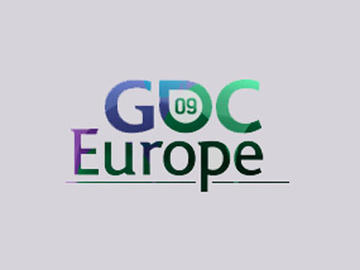
I got the chance to go to GDC Europe as a business trip, and I’ll write a short summary of the sessions I attended.
Iian Gilfeather – Advanced Racing Game AI in PURE
When trying to overcome the problems of rubberband AI, they turned towards a system where designers could write scripts for races, which would for example tell the AI to try to form 3 groups of which two would overtake the player at the start and which the player has to race to the goal, with the AI becoming more forgiving in the end. Interesting for my current line of work is the way in which they control the AI and measure the player`s current skill level, which is a player modelling approach in which 4 skills (e.g. getting the best race line or performance on jumps) are measured on a scale from 0 to 1. The AI is assigned a target point relative to the player at which it will try to stay, and the relative position is adjusted by adapting the skill factors. So if an AI has to fall back from a position infront of the player, it`s skills are reduced so it will perform badly until it reaches its target point. Interesting for us is that we`re thinking about using a similar appraoch in interactive storytelling to choose the best story lines for certain player types.
There`s also an article on gamasutra about the system.
Don Daglow – Designing Games for New Audiences
Don Daglow shared some stories of his 40 years of experience in producing games, and then presented several ways of producing games that, according to him, don`t work anymore for the current market.
Cevat Yerli – The Future of Gaming Graphics
A relatively technical keynote coming from the CEO of the company. He presented the history of their engines, pointing out that they were relatively naive when they started out, sometimes discovering the same things other had found before them. He then talked a bit about their plans for the future, which will come to light sometime in 2012-13, as their development is linked to the console cycle. He then had some slides about possible techniques which will see use in the future, among them ray tracing, point-based rendering, classical rasterization (but more refined) as well as sparse voxel octrees. What they are also preparing for is the clash between GPUs and CPUs, where he pointed out that he thinks the approach of OpenCL is a good way to handle it.
As I wrote in the Crysis wrapup, it’s pretty obvious that they want to throw as many meshes and effects at you at the best quality, but high-quality stories are not really their focus…
Discussion with Don Daglow
Not that much to say, it was a small discussion/dialogue about storytelling, creating emotion in games and believable characters.
Dierk Ohlerich – Procedural Content Generation taken to the Extreme
Presented by a member of the farbrausch demo group, this presentation showed the concept and especially the content creation side of the demos such as .kkrieger and .debris. I never got around to reading up on the techniques they used before, it`s based on basic operations (noise generation, masking, duplication, blur, …) being chained together. For the creation, there`s a GUI in which these operations can be configured and combined. It works very well for textures, but according to the presenter working with meshes doesn`t work that well.
Also interesting was that his company is working with procedural content generation for commercial titles, where the XBox and PS3 versions create the content while loading while the Wii is too slow and must load the content from the disc.
Matias Myllyrinne – From Max Payne to Alan Wake: Creating Intellectual Properties the Remedy Way
Less technical and more from a business viewpoint than the first keynote. He showed an old trailer from Alan Wake and a video from the story author about the way the story is written and integrated into the game. He then talked about important parts of their company culture as well as their way of creating IPs, e.g. having strong main characters (Max Payne, Alan Wake) or well-written stories.
Ascending the CURSED MOUNTAIN: The Hollywood Model in Real Life
Several people involved in the development of Cursed Mountain talked about the possibilities and problems related to development spread over many international teams (there were 16 companies from 14 countries involved). What stuck for me was that it’s possible to start out with a very small team for pre-production and tool development, then get the large team together for the content production and then finish with the small team again for post-production. The alternative is to have a large team in-house of which many members have to sit around idly during large phases.
The actual game looks pretty good, I guess I’ll get it when it comes out later this week.
Calle Lejdfors – The Glacier 2 Deferred Rendering Pipeline: Tools and Techniques
This presentation renewed my interest in toying around a bit with deferred shading myself. Interesting was seeing the level editor, which keeps track of the cost of the lighting (by assuming the slowest targeted system, the PS3 GPU) and warns level designers when the budget has been exceeded.
Party
The party on the first night of GDC was at the Ivory Lounge Club. Due to the loud music it was hard to talk there and later a lot of people were standing around in the street.